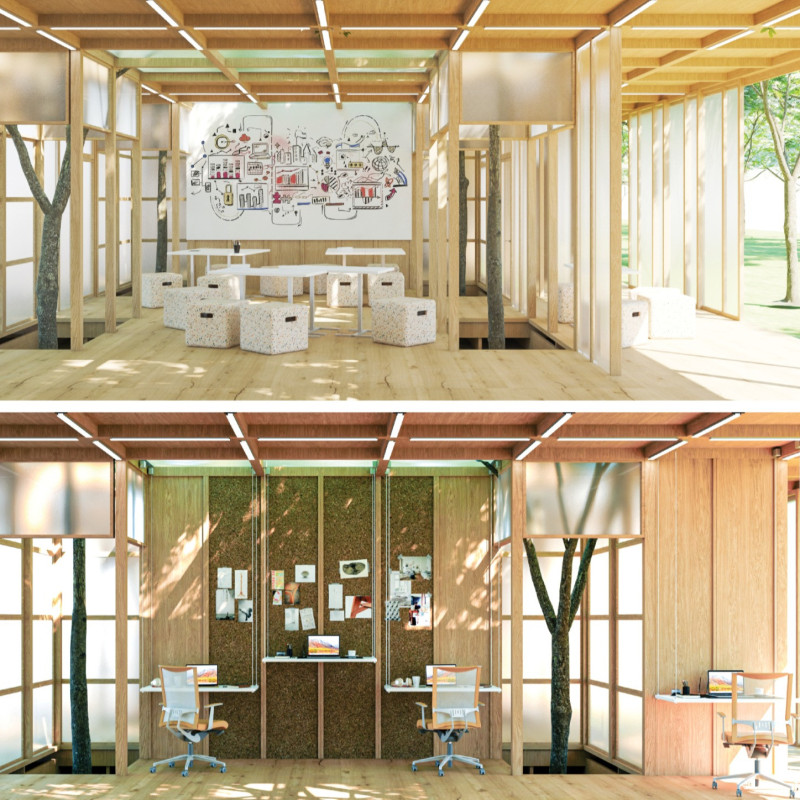5 key facts about this project
The design located along the Paseo de la Castellana in Madrid focuses on modern workspace flexibility in an urban setting. It addresses new ways of working, creating various environments that suit individual needs and encourage teamwork. With its prime location, the project connects important cultural sites and transport networks, allowing for easy access and interaction with the city.
Modular Design
The approach features a modular design built on a grid system that can adapt to different staff arrangements. Each workspace can be reconfigured as required, responding to the changing demands of work. This flexibility is essential in today's office settings, where the need for adaptable spaces is more important than ever.
Communal Spaces
Communal areas play a significant role in the design, especially the courtyards intended for casual meetings and collaboration. These spaces enhance social interaction, inviting employees to gather and share ideas. By integrating greenery and open-air environments, the design helps create a pleasant atmosphere that fosters a sense of community among users.
Sustainable Practices
Sustainability influences many design choices. Extensive use of glass allows natural light to enter workspaces, which helps reduce energy consumption. This conscious decision improves the workspace environment and promotes a comfortable and healthy setting for all users.
Workspace Variety
The layout includes different types of spaces such as private offices, flex desks, and collaborative meeting rooms equipped with sliding whiteboard panels. Each area serves a specific function while reflecting the overall theme of versatility. A public agora with tiered seating is also included, enabling larger gatherings and enhancing the building’s functionality.
Materials selected for the project include a cork green roof, eco board, waterproofing sheets, thermacork insulation, and a timber frame structure. Each material fulfills a vital role in supporting efficiency and performance. These choices add to the design’s overall effectiveness in creating a thoughtful workspace that aligns with the needs of its users while blending harmoniously within its urban context.






















































